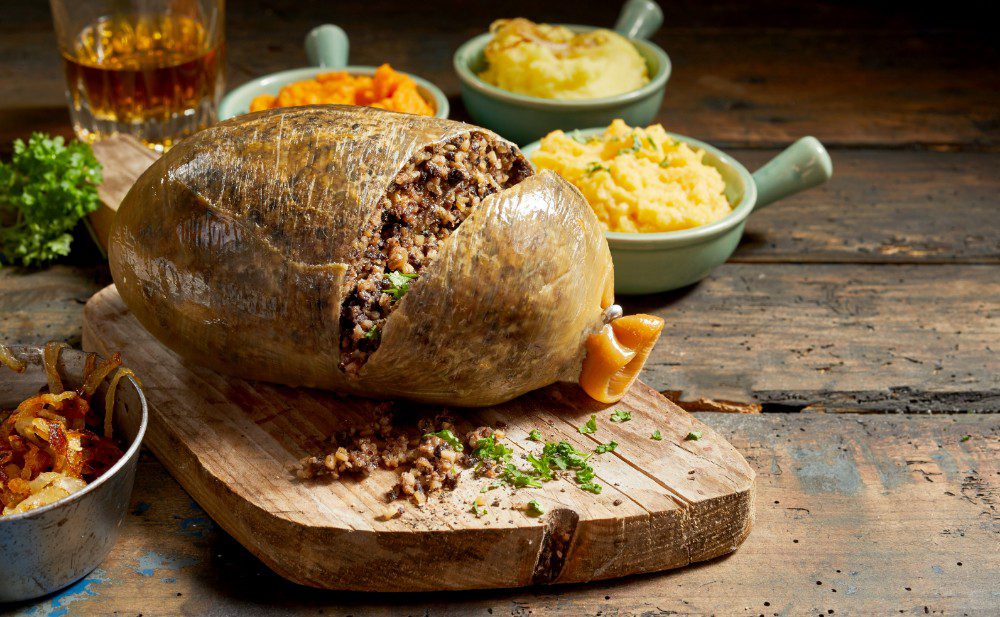Haggis is enjoyed by many Scots throughout the year, but what is Haggis made of and why is it traditionally eaten in Scotland?
Haggis (known as ‘tagais’ in Scottish Gaelic) is a dish traditionally made from the liver, stomach or heart of sheep but it can be made with beef or pork.
The meat is mixed with onion, oatmeal, spices and suet before being boiled in the animal’s stomach. Although this is the traditional method, many haggis these days are presented in synthetic or plastic casing.
Traditionally, as a main meal, it's served as a main meal with neeps and tatties - mashed potato and turnip.
Haggis is also enjoyed as part of a cooked breakfast, or in other main dishes such as haggis nachos, pakora or bon bons.

When you think of haggis, you may think of a Burns supper. The connection to Robert Burns goes back to his 1786 poem ‘Address to a Haggis’, in which he immortalised the dish as the “great chieftain o the puddin'-race”.
The first ever Burns supper was held at Burns Cottage in Ayr by friends of the Bard on 21st July 1801, the fifth anniversary of his death, and now Burns Night on 25 January is celebrated around the world.
The oatmeal element of haggis also adds to its Scottishness, and us Scots certainly have a taste for meat puddings such as black and white pudding, which are available in chippies across the land.
Scotland also has the world’s first dedicated haggis factory, opened by Macsween in Loanhead, south of Edinburgh in 1996, and the dish’s popularity has led to myriad innovations, from venison haggis and haggis pakoras, to vegetarian and gluten-free versions.
Scotland is also home to Simon Howie butchers, who recently sent a haggis into space. They also reported record-breaking sales for its haggis range in the run-up to Burns Night in 2017.
